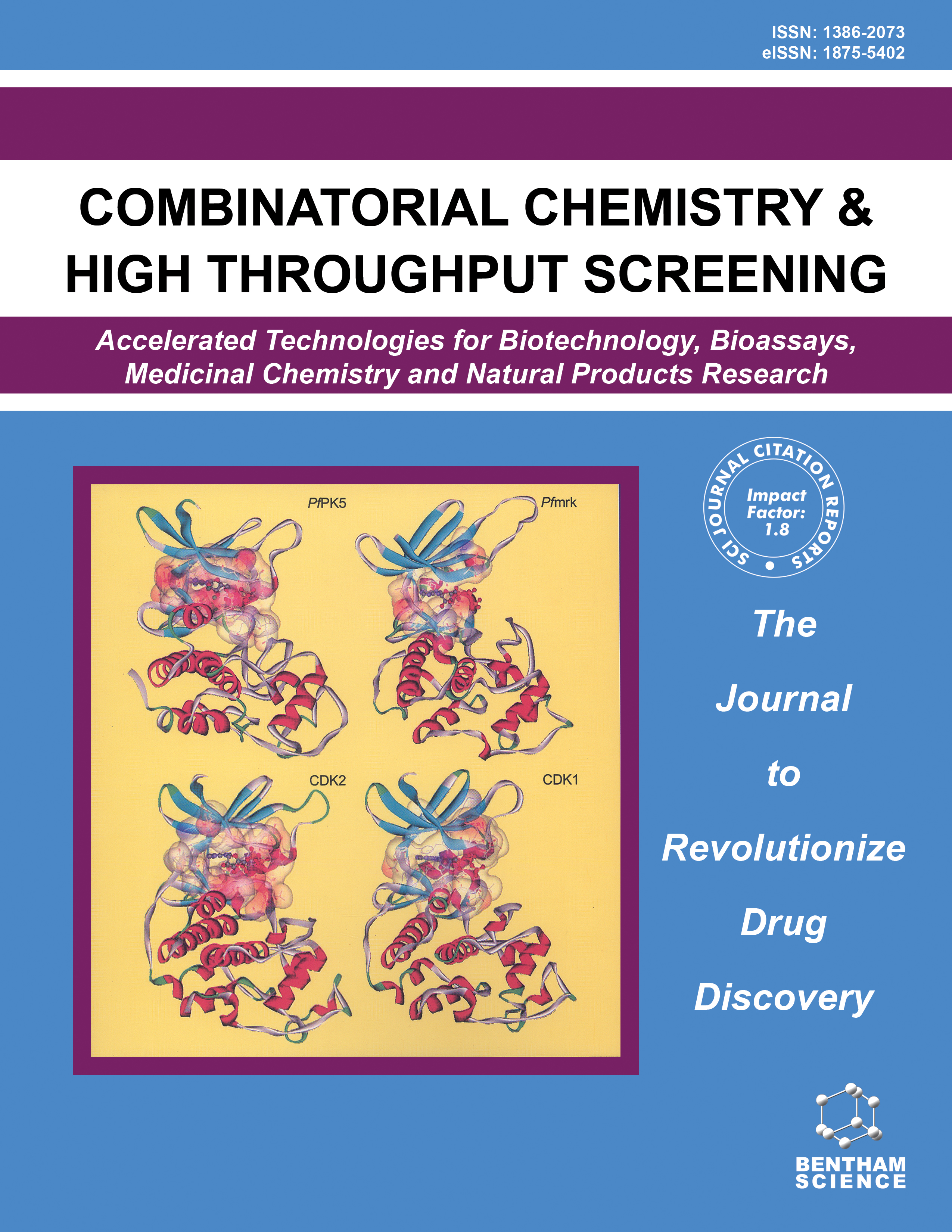-
oa Editorial [Hot Topic: Combinatorial Synthesis and Computer-Aided Design of Anti-HIV Drugs (Guest Editor: S.P. Gupta)]
- Source: Combinatorial Chemistry & High Throughput Screening, Volume 8, Issue 5, Aug 2005, p. 375 - 375
-
- 01 Aug 2005
- Previous Article
- Table of Contents
- Next Article
Abstract
In the present era, acquired immunodeficiency syndrome (AIDS) is the most fatal disorder for which no completely successful chemotherapy could be developed so far. The causative agent of AIDS has been identified as a retrovirus of type-1 (HIV-1). Therefore, a great attention has been focused in the recent years on the design and development of anti-HIV drugs. The last five years has seen an explosion in the exploration and adoption of combinatorial synthesis of drugs with the continuous development of high throughput screening. Compound libraries designed to produce specific inhibitors of therapeutic target proteins have generated significant interest in drug discovery research, resulting into the discovery of many lead compounds. The present issue is therefore devoted to publish some timely reviews on the combinatorial synthesis of anti-HIV drugs and their computer-aided design. So far various methods have been developed in combinatorial chemistry, which include solid-phase synthesis, solutionphase synthesis, fluorous-phase synthesis, and combination of all them. Of these, the solid-phase synthesis (SPS) has been found to play a decisive role in the ongoing development of combinatorial chemistry. Therefore, in article 1, Sriram et al. have presented a survey of solid-phase synthesis of some anti-HIV drugs that include HIV-1 reverse transcriptase inhibitors, protease inhibitors, HIV-1 function inhibitors such as adsorption inhibitors, CCR5 antagonists, and HIV-1 Tat-TAR inhibitors. A similar article (article 2) describing in more detail the combinatorial synthesis has been presented by Mugnaini et al. Computer-aided design of anti-HIV compounds based on generation of virtual combinatorial libraries followed by their screening, using QSAR models, represents a promising technique to produce novel actives. In article 3, Varnek and Solov'ev describe the design of several new compounds possessing high anti-HIV activities, using substructural molecular fragments method (SMF) of computer-aided techniques of drug design. The virtual screening approach for docking small molecules into a known protein structure is a powerful tool for drug design. Sangma et al. describe in article 4 a combined docking and network approach to screen anti-HIV drugs from active compounds available in the Thai medicinal plants database. Article 5 by Prabhakar et al. presents an analysis of the dependence of the HIV-1 RT inhibitory activity of 2-(2,6-dihalophenyl)-3- (substituted pyridin-2-yl)-thiazolidin-4-ones on some topological descriptors obtained from DRAGON software, in which simple topological descriptors (TOPO), Galvez topological charge indices (GVZ) and 2D autocorrelation descriptors (2DAUTO) have been found to yield good predictive models for the activity of these compounds. Finally, article 6 by Rawal et al. describes some studies on the synthesis of a series of some 4-thiazolidinones and the screening of their anti-HIV activity, along with a QSAR study on them. I thank all the authors of this issue for their excellent stimulating contributions and hope that readers will greatly enjoy reading these articles as I did and that these contributions will be of great value to those involved in the study of design and development of anti-HIV drugs.


